1. Overview
Alain Marie Pascal Prost, often referred to as "The Professor" (Le ProfesseurFrench), is a French former racing driver and motorsport executive who competed in Formula One from 1980 to 1991 and again in 1993. Renowned for his intellectual and strategic approach to racing, Prost secured four Formula One World Drivers' Championship titles during his illustrious career (1985, 1986, 1989, 1993). At the time of his retirement, he held numerous Formula One records, including the most Grand Prix victories (51), fastest laps (41), and podium finishes (106).
Prost began his motorsport journey in karting at age 14, rapidly ascending through junior categories before making his Formula One debut with McLaren in 1980. His career was marked by significant stints with Renault, McLaren (a second time), Ferrari, and Williams. He is particularly known for his intense and often controversial rivalry with Ayrton Senna, which defined an era of Formula One racing. Beyond his driving career, Prost ventured into team ownership with Prost Grand Prix, which operated from 1997 until its dissolution in 2002 due to financial difficulties, reflecting challenges he faced beyond the cockpit. His post-retirement activities also include roles as a television pundit and an advisor for major manufacturers like Renault. Prost's career is objectively viewed through a balanced lens, acknowledging his exceptional achievements while critically examining the numerous controversies and team conflicts that accompanied his path to becoming one of Formula One's all-time greats.
2. Early Life and Junior Career
Alain Prost's formative years were characterized by a strong athletic inclination before he discovered motorsport, leading him through a rapid ascent in junior racing categories.
2.1. Childhood and Education
Alain Prost was born on February 24, 1955, in Lorette, Loire, near the town of Saint-Chamond, Loire, within the Loire department, close to Saint-Étienne, France. His father, André Prost, managed a furniture store. His mother, Marie-Rose Karatchian, was born in France of Armenian descent. Prost had an older brother named Daniel, who tragically died of cancer in September 1986.
As a child, Prost was active and athletic, engaging enthusiastically in various sports, including wrestling, roller skating, and football, activities that led to him breaking his nose multiple times. He initially considered careers as a gym instructor or a professional footballer, even serving as a football team coach at his school and dreaming of playing for the French national team. His passion for football was so strong that he was reportedly upset when a 1986 Detroit Grand Prix qualifying session coincided with a crucial 1986 FIFA World Cup quarter-final match between France and Brazil. However, his life's direction changed dramatically at age 14 when he discovered kart racing during a family holiday in Nice. This new sport quickly became his chosen career path. At 16, he purchased his first kart with money he saved from working in his father's shop.
2.2. Karting and Junior Formulae
Prost achieved significant success in karting during his teenage years, winning several championships. In 1972, he became the European Junior Kart Champion. By 1974, he transitioned to full-time racing, supporting himself by working as an engine modifier and go-kart distributor. His notable karting achievements include winning the French senior karting championship in 1975.
He made the transition to open-wheel racing in 1976, quickly progressing through the junior categories. That year, he dominated the French Formula Renault, winning the championship and all but one race (the final race where he retired due to a fuel issue), securing 6 pole positions and 11 fastest laps out of 13 rounds. In 1977, he won the Formula Renault European championship with 6 wins, 3 pole positions, and 7 fastest laps out of 18 races. He also made guest appearances in Formula Two races at Nogaro and Estoril, finishing 10th and retiring, respectively.
In 1978, he competed in the European Formula 3 Championship with a Martini Mk 21B-Renault. Despite only securing one win, one pole position, and one fastest lap out of 11 races (with three retirements due to engine trouble), he simultaneously won the French Formula 3 championship. He also competed in a Formula Two race at Pau, retiring due to engine issues. His junior career culminated in 1979 when he continued to compete in the European Formula 3 championship with a Martini Mk 27-Renault, winning 9 out of 13 races, along with 4 pole positions and 8 fastest laps. He successfully defended his French Formula 3 title that year, achieving consecutive championships in the series. These successes brought him to the attention of Formula One teams.
3. Formula One Career
Alain Prost's Formula One career was a journey of remarkable success, intense rivalries, and significant team changes, establishing him as one of the sport's all-time greats.
3.1. McLaren (1980)
After his commanding performance in Formula 3, Alain Prost garnered interest from several Formula One teams, including McLaren, Brabham, and his home country's Ligier. Ligier had been Prost's initial aspiration, and he held negotiations with team principal Guy Ligier, especially after Patrick Depailler suffered a long-term injury. However, Ligier requested a substantial fee, stating that there were many experienced candidates for a Formula 3 graduate.
Marlboro, a key sponsor for McLaren, then offered Prost a test drive at the Circuit Paul Ricard due to his impressive Formula 3 record. During this test, Prost not only outpaced fellow promising young driver Kevin Cogan but also set faster lap times than McLaren's regular driver, John Watson. Impressed by his performance, McLaren signed Prost for the 1980 season, partnering him with Watson.
Prost's Formula One career began promisingly at the 1980 Argentine Grand Prix in Buenos Aires, where he finished sixth, scoring points in his debut race - a rare feat at the time. He continued to score points in Brazil (5th), Great Britain (6th), and the Netherlands (6th) with the new McLaren M30 chassis, accumulating five points and finishing 15th in the Drivers' Championship, one point behind Watson. Despite the promising start, Prost faced challenges, including several accidents attributed to the car's frequent breakdowns and perceived team blame. He broke his wrist during practice at the 1980 South African Grand Prix and suffered a concussion during practice at the 1980 United States Grand Prix at Watkins Glen International, causing him to miss those races. He also retired from the previous round in Montreal due to rear suspension failure.
Despite having two years remaining on his contract, Prost decided to leave McLaren at the end of the season, signing with the French factory team, Renault. He later explained that his departure was due to the car's unreliability and his feeling that the team unfairly blamed him for accidents. Watson reportedly suggested that McLaren team boss Teddy Mayer had initially wanted to sign Kevin Cogan but Marlboro insisted on Prost. Prost would not return to McLaren until 1984, after Ron Dennis had assumed full control of the team.
3.2. Renault (1981-1983)
Alain Prost joined the French Renault factory team in 1981, partnering with fellow Frenchman René Arnoux. Motorsport author Nigel Roebuck noted that tensions between Prost and the more experienced Arnoux began immediately, with Prost proving quicker from the start. Prost retired from the first two Grands Prix due to collisions but achieved his first Formula One podium finish at the 1981 Argentine Grand Prix. After retiring from the next four races, he secured his maiden Formula One victory at his home race, the 1981 French Grand Prix at Dijon-Prenois, finishing two seconds ahead of John Watson.
Prost described his debut victory as a mental breakthrough, stating, "Before, you thought you could do it. Now you know you can." He led the next five races from the start, winning two more that season in the Netherlands and Italy. He also took his first pole position in Germany and consistently finished on the podium whenever he completed a race distance. He concluded the 1981 season in fifth place in the Drivers' Championship, seven points behind champion Nelson Piquet.
In 1982, Prost won the first two Grands Prix in South Africa (recovering from a lost wheel) and Brazil (where he was awarded the win after Piquet and Keke Rosberg were disqualified). He scored points in four other races but did not secure another victory. Despite retiring from seven races, Prost improved to fourth in the Drivers' Championship, though with nine fewer points than the previous year. His relationship with Arnoux further deteriorated after the 1982 French Grand Prix, where Prost believed Arnoux, who won, reneged on a pre-race agreement to support him. Prost's relationship with the French media also suffered; he felt they turned against him after his success, commenting, "The French don't really like winners. It's hard to explain, but the French prefer martyrs who lose gloriously."
In November 1982, Prost, along with Jacques Laffite and Nelson Piquet, competed in the non-championship 1982 Australian Grand Prix at Calder Park Raceway. Driving a Formula Pacific spec Ralt RT4, Prost secured pole position with a time of 39.18 seconds and led every lap to win, finishing 15.32 seconds ahead of Laffite. This would be the first of his three Australian Grand Prix victories.
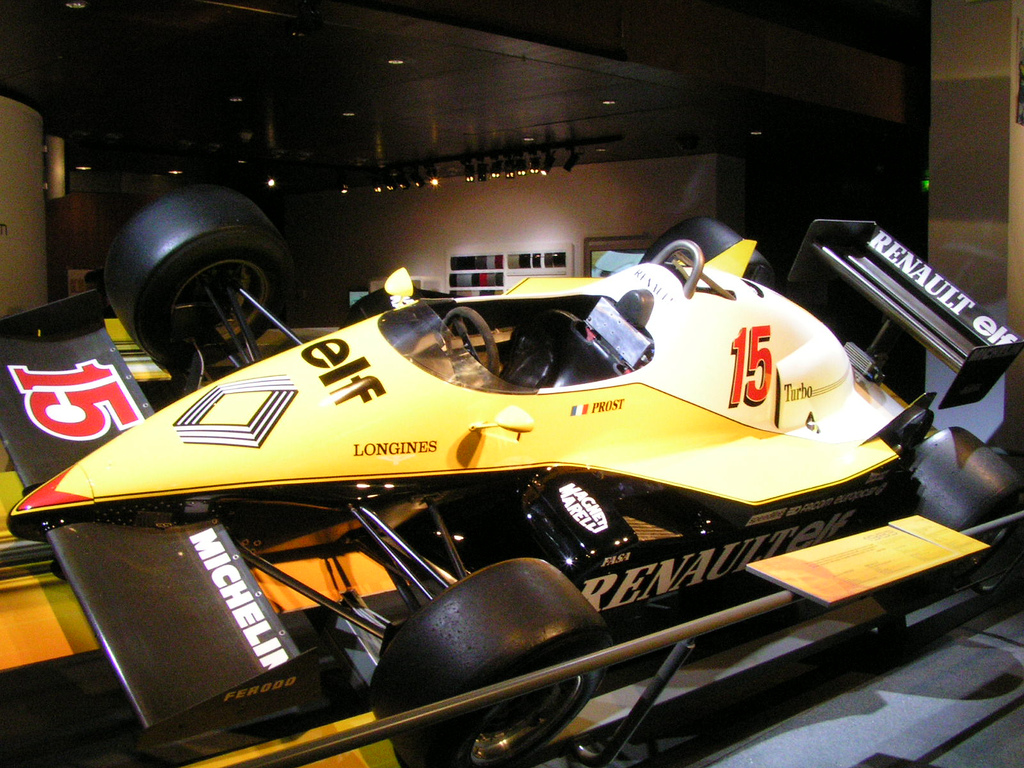
In 1983, Arnoux left Renault and was replaced by American Eddie Cheever. Prost secured four more victories for Renault and finished second in the Drivers' Championship, two points behind Nelson Piquet. Piquet and the Brabham team surpassed Prost and Renault in the final races of the season. Prost criticized the team for being too conservative in car development, leading to increasing friction with Renault's management, who blamed him for failing to win the championship. This, coupled with the French fans' resentment over Arnoux's departure, exacerbated the situation. Prost's public comments during the final race, stating his car was "not competitive" and that he "didn't lose by my own fault," led to Renault firing him just two days later. He promptly re-signed with McLaren for the 1984 season and relocated his family to Switzerland after some Renault factory workers reportedly burned two of Prost's road cars, including a Mercedes-Benz, at his home in France.
3.3. McLaren (1984-1989)
Alain Prost's second tenure with McLaren was the most successful period of his career, yielding multiple championships and defining rivalries.
3.3.1. First Championship and Lauda Rivalry (1984-1985)
Prost joined double world champion Niki Lauda at McLaren in 1984, driving the John Barnard-designed McLaren MP4/2 powered by a 1.5 L TAG-Porsche V6 turbo engine. He lost the world championship to Lauda in the final race of the season, the 1984 Portuguese Grand Prix, by a mere half-point, despite winning seven races to Lauda's five. The half-point margin remains the closest title race in Formula One history.
The controversial half-point came from the 1984 Monaco Grand Prix. Prost was leading, but Ayrton Senna (Toleman) and Stefan Bellof (Tyrrell) were rapidly closing the gap. Clerk of the Course Jacky Ickx controversially stopped the race at half distance due to heavy rain without consulting race officials. Under Formula One regulations, Prost received only half of the nine points normally awarded for a victory. Some believed if the race had continued, even if Prost had been overtaken by Senna and Bellof, he would have secured more points, potentially enough to win the championship.
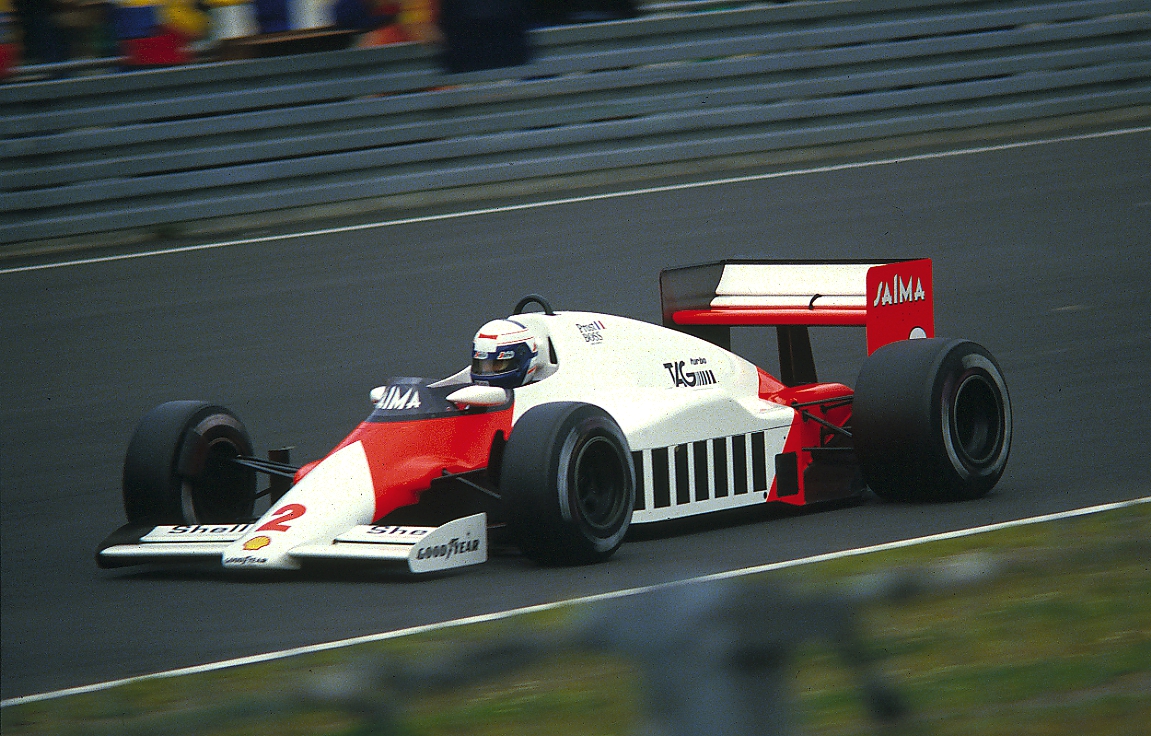
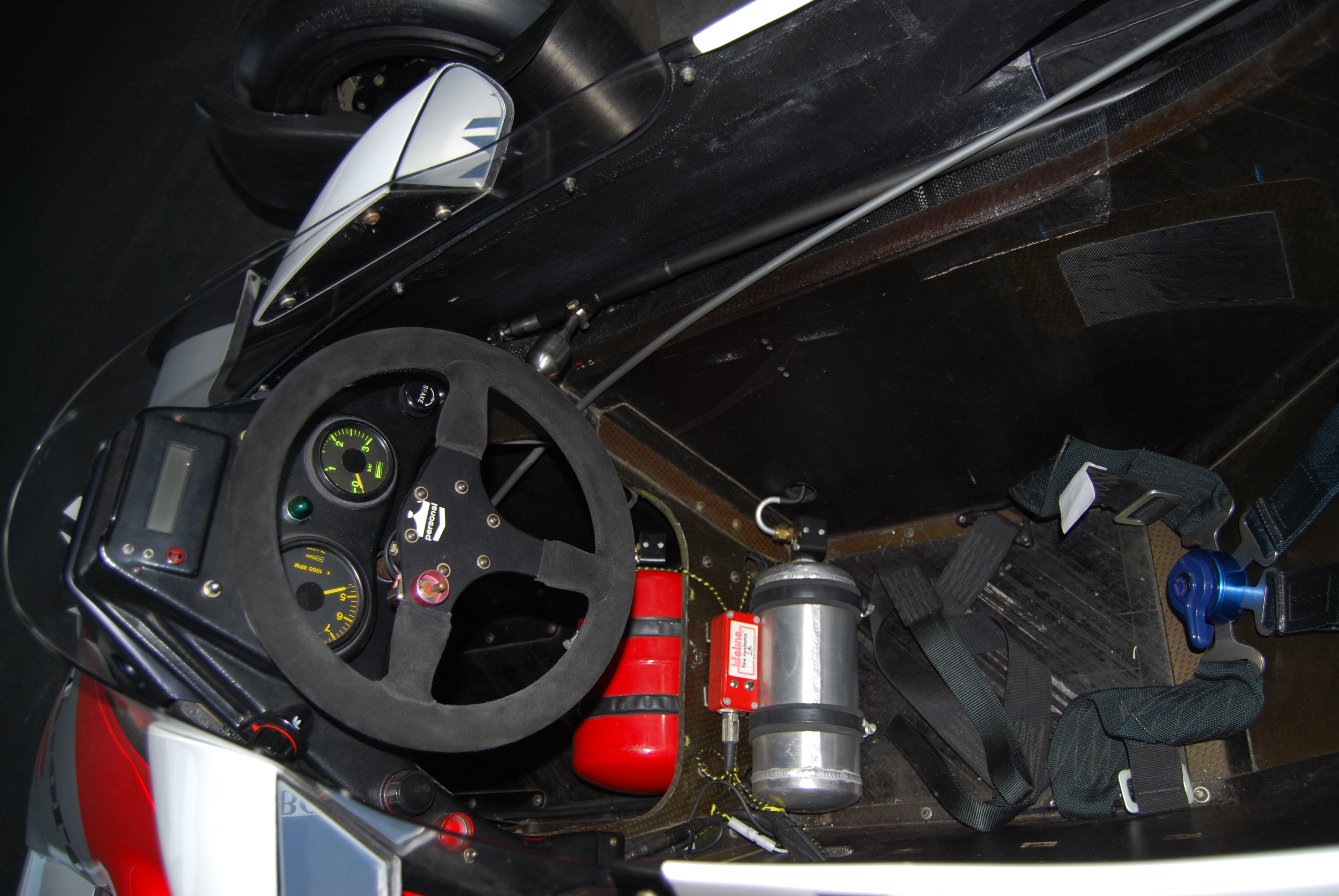
In 1985, Prost became the first French Formula One World Champion. He won five of the sixteen Grands Prix, though he was disqualified from the 1985 San Marino Grand Prix after his car was found to be 2 kg underweight during post-race scrutineering. Prost finished 20 points ahead of his closest rival, Michele Alboreto. His performance earned him the Légion d'honneur distinction in France. At the end of the season, Lauda retired, crediting Prost with pushing him to retire: "I had this perfect car, and then this French pain-in-the-ass arrives and blows me away. If he hadn't turned up I'd have gone on for another few years."
3.3.2. Continued Success and Senna Rivalry (1986-1989)
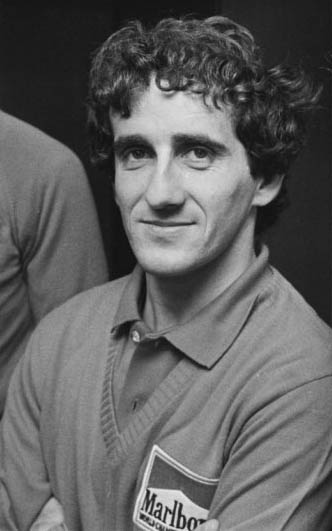
Lauda was replaced by 1982 World Champion Keke Rosberg for the 1986 season. Prost successfully defended his title despite his McLaren struggling against the powerful Honda-powered Williams cars of Nelson Piquet and Nigel Mansell. Heading into the final race of the season, the 1986 Australian Grand Prix, Prost was 6 points behind Mansell in the championship standings. Prost's consistent performance, including four second-place finishes to Piquet's three, kept him in contention. In a dramatic final race, Mansell suffered a rear tyre failure at 180 mph, forcing him to crash out. The Williams team then pitted Piquet for a precautionary tyre change, allowing Prost, who had already pitted earlier due to a puncture, to take the lead. He held off a charging Piquet to win the race and clinch his second consecutive championship, becoming the first driver to retain the title since Jack Brabham in 1960.
Another memorable race from 1986 was the San Marino Grand Prix, where Prost was leading comfortably but ran out of fuel three corners from the finish line. He frantically weaved his car to slosh the last drops of fuel, managing to creep over the line and win. This incident echoed his 1985 disqualification at the same track. At the 1986 German Grand Prix, his car again ran out of fuel on the final lap's finishing straight. Instead of retiring, Prost got out and tried to push his car to the finish line, earning applause from the crowd, though he ultimately didn't reach it and was classified sixth. At the 1986 Belgian Grand Prix, a collision with Gerhard Berger severely bent his car's front suspension and engine mountings, affecting its handling. McLaren Technical Director John Barnard noted the car was "bent like a banana" after the race.
With Rosberg retiring, Stefan Johansson joined Prost at McLaren in 1987. Although McLaren introduced the new MP4/3, the TAG engines lagged behind in power and suffered from unreliability compared to previous seasons. Despite this, Prost remained a contender, winning three races and breaking Jackie Stewart's record for most Grand Prix victories (28th win) at the 1987 Portuguese Grand Prix. Stewart himself praised Prost, calling him "the best race driver of his generation." Prost considered his win at the opening round in Brazil as his best and most rewarding. Despite starting fifth, three seconds off pole, he focused on race setup, opting for low downforce to reduce tire wear. This strategy allowed him to complete the 61-lap race with only two stops, unlike his rivals who made three or more. He finished 40 seconds ahead of Piquet. Prost finished the 1987 season in fourth place, his furthest from the championship lead besides his debut season and 1991. The `Autocourse` annual editor, who had consistently ranked Prost as the No. 1 driver from 1985 to 1987, noted that despite the engine disadvantage, Prost should have won at least six races that year, emphasizing his "outstanding all round ability."
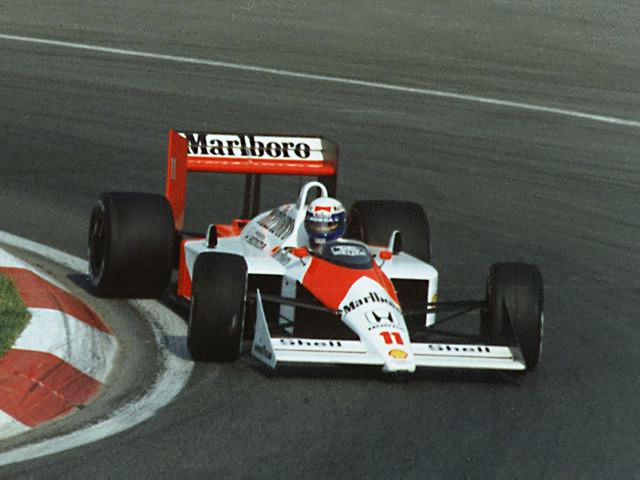
The 1988 season marked a pivotal moment when Honda partnered with McLaren, bringing their dominant RA16 engines. Honda sought to sign either Nelson Piquet or rising star Ayrton Senna to cater to the South American market. Prost, when consulted by McLaren, suggested Senna due to his youth and talent-a decision he later regretted. McLaren assured Prost and Senna equal terms, though Dennis noted Prost's deep suspicion.
The McLaren-Honda partnership dominated, winning 15 of 16 races, a record that stood until 2023. Prost finished first or second in every race except his two retirements. He won seven races and, under the scoring system then, would have been champion if all results counted. However, the rule counting only the 11 best results awarded Senna the title by three points. A notable incident occurred at the 1988 Portuguese Grand Prix where Senna tried to force Prost into the pit wall to prevent an overtake, marking the beginning of their bitter rivalry.
Prost grew suspicious that Honda favored Senna, a concern amplified when a crate marked "Special - For Ayrton" arrived. When Prost, in the final year of his contract, threatened to join a rival, Ron Dennis publicly supported Prost, acknowledging engine differences. Dennis tried allocating engines randomly, but Prost remained unconvinced. At the 1989 Italian Grand Prix, Prost announced his move to Ferrari for 1990, further straining relations. McLaren then fully supported Senna, giving him preferential treatment and more mechanics, while Prost felt marginalized. Prost won at Monza after Senna retired, giving him a 20-point lead. He further inflamed McLaren by throwing his winner's trophy into the Ferrari crowd. Senna then pushed for Prost's immediate dismissal, with Ferrari even offering to swap drivers, but McLaren opted to let Prost finish the season in exchange for a public apology. This ensured Prost wouldn't clinch the 1989 title in a Ferrari.
Prost secured his third Drivers' Championship at the 1989 Japanese Grand Prix, the penultimate race. Prost was 16 points ahead, meaning Senna needed to win both remaining races. The two collided with seven laps remaining. Prost was widely blamed, with many believing he intentionally caused the collision by refusing to leave a gap on the inside, as Senna's aggressive style often dared other drivers to back off. Senna managed to restart, won the race, but was controversially disqualified by the FIA for missing the chicane and for receiving a push start, leading to a fine and a suspended ban. Prost admitted, "I know everybody thinks I did it on purpose," but stated he "did not open the door." McLaren unsuccessfully appealed Senna's disqualification. Despite the controversy, Prost's championship was secured.
3.4. Ferrari (1990-1991)
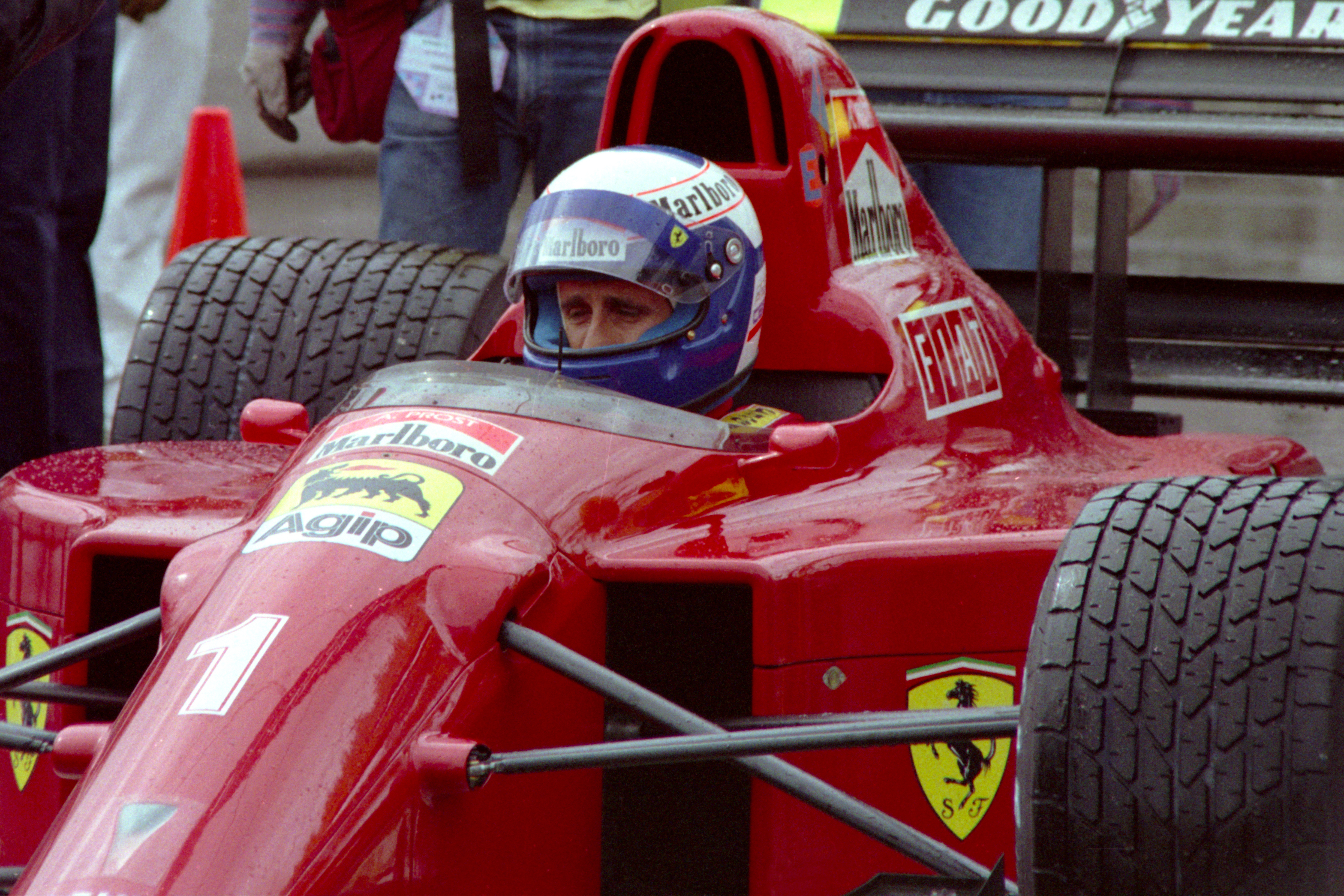
In 1990, Alain Prost became the first Ferrari driver signed after the death of team founder Enzo Ferrari in 1988. Ferrari had strategically acquired several McLaren chassis designers, including John Barnard and Steve Nichols, over the years. The 1990 Ferrari 641 proved to be a significant threat to Honda's dominance in the Constructors' Championship, with Ferrari finishing just 11 points shy of the title. Prost clinched five victories for Ferrari that year, triumphing in Brazil, Mexico, France, Britain, and Spain. His win in Mexico was particularly notable, as he started from 13th position and climbed to victory. In both the Mexican and Spanish Grands Prix, he led Nigel Mansell to Ferrari 1-2 finishes.
The championship once again came down to the penultimate race of the season in Japan, with Prost trailing McLaren-Honda's Senna by nine points. Similar to 1989, a controversial collision between the two rivals decided the title. At the first corner of the first lap, Senna intentionally drove his car into Prost's, eliminating both from the race and securing the championship in Senna's favor. Ron Dennis immediately recognized Senna's deliberate action. A year later, in 1991, Senna admitted the crash was intentional, partly as retaliation for Prost's actions in 1989. Prost vehemently protested Senna's maneuver, stating, "What he did today was absolutely disgusting. ... He has no value [as a person]," but Senna received no penalty. Prost finished the season seven points behind Senna, and Ferrari was runner-up to McLaren in the Constructors' Championship.
At the end of the season, Mansell departed Ferrari to rejoin Williams, citing an unstable relationship with Prost. Mansell claimed that while Ferrari initially guaranteed him number one driver status, they later paid him to cede that position to Prost once Prost became available. Mansell further alleged that after he took pole position in the 1990 French Grand Prix with a purportedly superior chassis, Prost secretly demanded that Ferrari give him Mansell's car for the next race in Britain. Mansell was replaced by Jean Alesi.
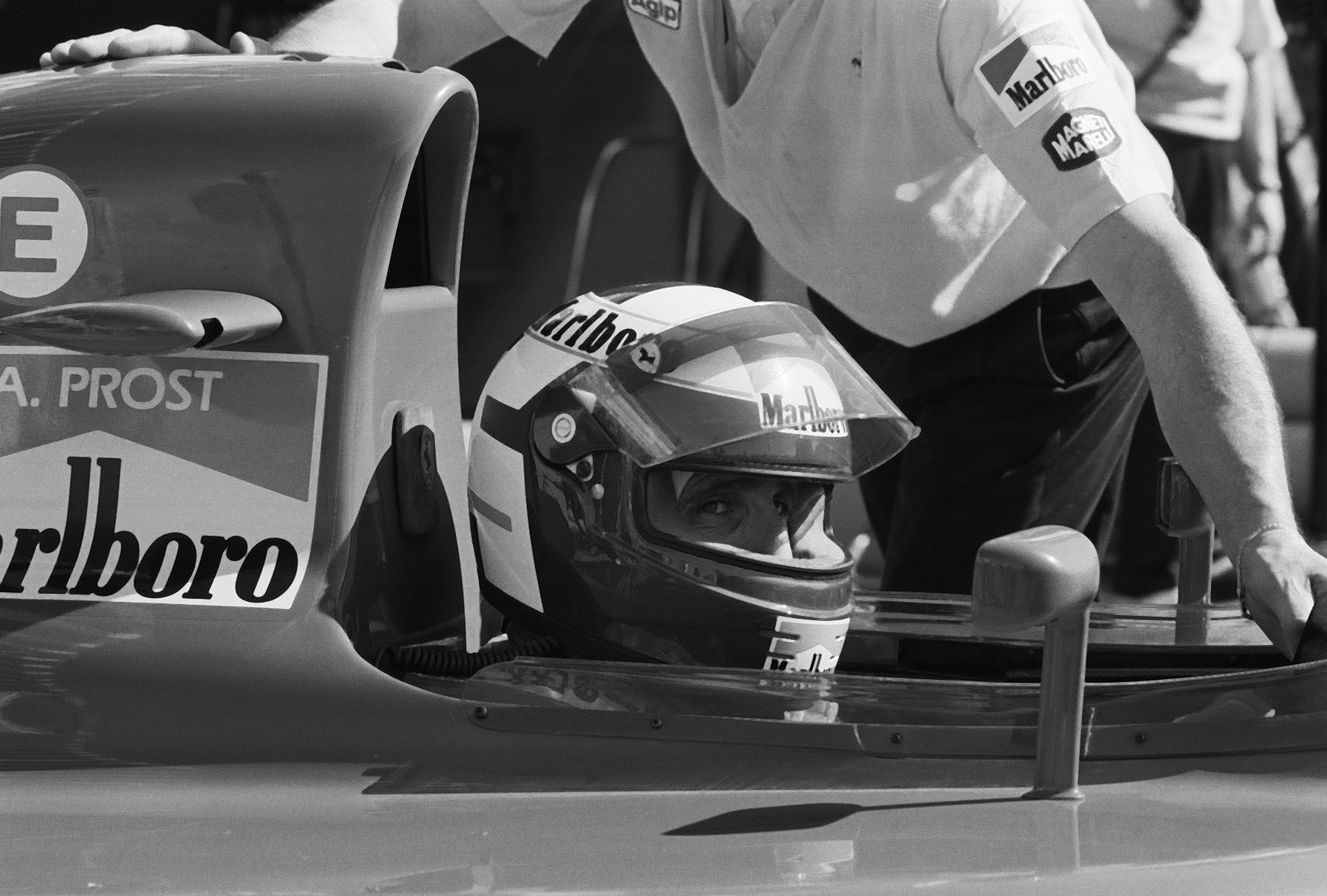
The 1991 season was challenging for Ferrari, as the Ferrari 642 lacked the reliability and competitiveness of the McLaren and Williams cars. Prost consistently finished races no lower than fifth and secured five podiums, but he failed to win any races and only completed eight. His teammate Alesi also struggled, finishing only seven races. The Ferrari V12 engine was reportedly no longer competitive against the lighter, more fuel-efficient V10s used by rivals, and the chassis design was also deemed uncompetitive, partly due to John Barnard's departure from Ferrari in 1990. Although Ferrari introduced the upgraded Ferrari 643 for Prost's home race at Magny-Cours, where Prost and Alesi finished second and fourth, respectively, the car was still not capable of challenging for the title over the season. To add to Ferrari's woes, Mansell's Williams-Renault emerged as McLaren-Honda's primary competitor, with Mansell finishing second in the Drivers' Championship that year.
Prost openly expressed his frustrations with the team, famously likening the car to a "truck." Ferrari responded by firing him with one race remaining in the 1991 season, replacing him with Gianni Morbidelli for the 1991 Australian Grand Prix and Ivan Capelli for the following season. Despite his dismissal, Ferrari honored Prost's contract and continued to pay his salary.
3.5. Sabbatical (1992)
Alain Prost spent the 1992 season on a sabbatical from Formula One. He had explored various options, including an offer from Ligier, for whom he performed pre-season testing in early 1992. However, Ferrari paid him a substantial sum to take the year off, essentially preventing him from racing for a rival team in 1992. During this period, Nigel Mansell dominated the season with the Williams-Renault, securing the title with five races still to go. The McLaren-Honda combination, which had been so strong, was losing its edge; due to economic difficulties in Japan, Honda was no longer in a position to outspend Renault on engine development and chose to withdraw from Formula One at the end of the season. This left Williams-Renault as the undisputed top team, with their driver expected to comfortably win the 1993 title.
Prost quickly recognized the immense potential of the Williams car. He began negotiations with Frank Williams for a 1993 seat as early as the second race of the 1992 season, ultimately signing a two-year contract for 1993 and 1994. Prost had anticipated racing alongside Mansell, but Mansell's contract negotiations with Williams fell through over financial terms. As a protective measure, Prost had negotiated a clause in his contract that explicitly prevented Senna from joining the team in 1993. This led to Senna furiously accusing Prost of cowardice, though there was nothing Senna could do to alter the situation.
3.6. Williams (1993)
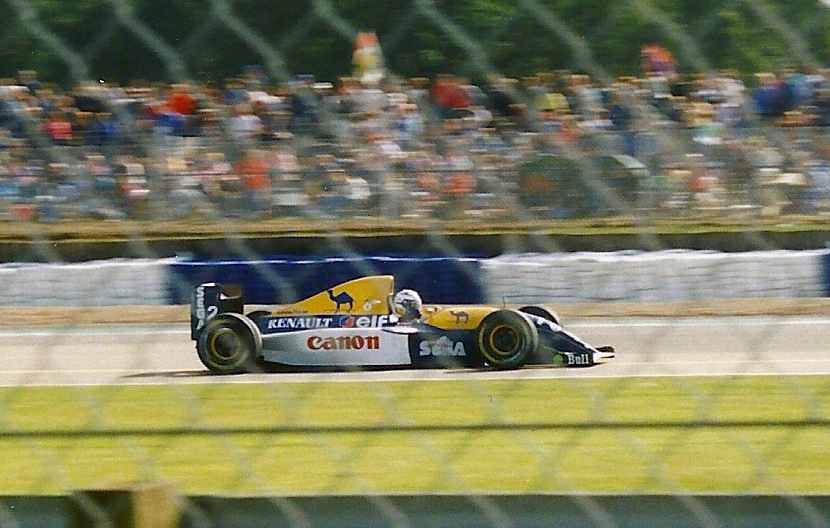
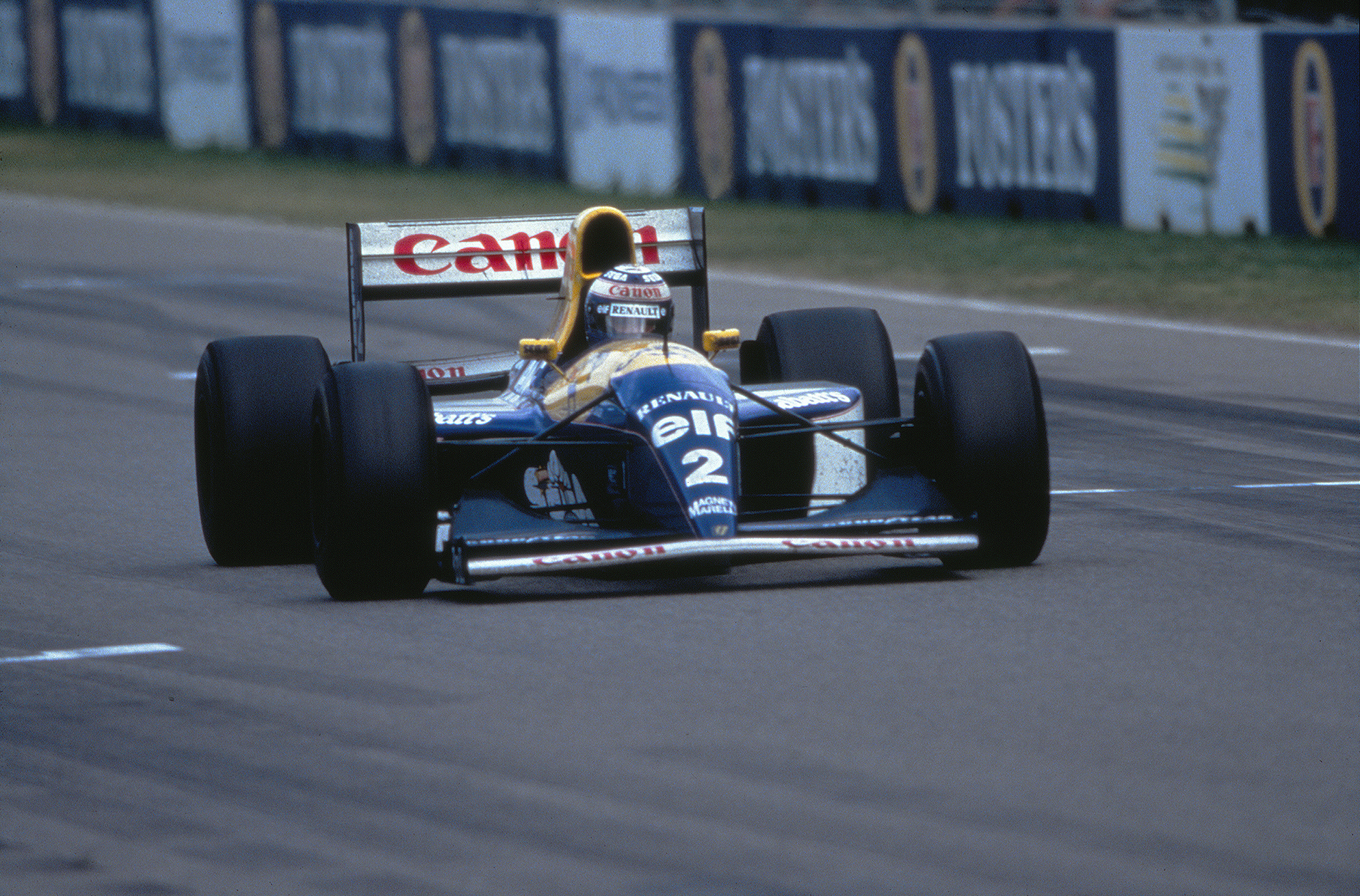
Alain Prost returned to Formula One in 1993 with the Williams team and achieved his fourth and final World Championship title. The Williams-Renault FW15C was a dominant car, and the team comfortably defended the Constructors' Championship, scoring twice as many points as second-placed McLaren. Despite the car's superiority, Prost's season was not without its challenges, especially after a year-long break. He admitted that adapting to the active suspension system and regaining his physical and mental sharpness took time. He noted that regular testing, which was common at the time, helped him regain his touch.
Prost won seven of the first ten races and secured pole position in 13 out of 16 races. While he initially won the opening race in South Africa, he retired in the Brazilian Grand Prix due to an aquaplaning incident during a sudden downpour, partly due to miscommunication with the team regarding tire changes. In the European Grand Prix, he struggled with fluctuating wet-dry conditions, making seven pit stops and finishing third, well behind Senna. At the Monaco Grand Prix, he qualified on pole but was given a penalty for a jumped start, leading to an engine stall during his penalty stop. He recovered from last place to finish fourth, even setting the fastest lap.
Despite early struggles, Prost regained momentum, winning four consecutive races from Canada to Germany, including his 51st and final career victory at the German Grand Prix. However, his teammate Damon Hill, making his first full-time season, steadily improved and began challenging Prost. Hill secured his first pole position at Prost's home race, the French Grand Prix, and then won three consecutive races from Hungary to Italy, creating a tense championship battle. Prost's column after the Italian Grand Prix noted Hill's increasing challenge, stating, "Damon's presence is seriously gnawing at my heart."
Factors contributing to Prost's non-dominant run included his adaptation to the active suspension (which Hill, having worked as a test driver, was already familiar with), the narrowing advantage of Williams as rival teams also adopted high-tech devices, and occasional clutch issues with the FW15C leading to engine stalls and lost positions.
Shortly before securing the title, Prost announced his retirement at the end of the season, a decision he had been considering for a year. This decision was influenced by the mental stress from incidents like the FISA's initial refusal to grant him a superlicense and controversial penalties, such as being ordered a stop-go for short-cutting a chicane in Germany. He also cited the tragic accident of WGP champion Wayne Rainey as a factor in his desire to retire while still in good physical condition. While he initially intended to announce his retirement after winning the championship, Senna reportedly leaked the information, forcing Prost to make an early announcement.
Prost clinched his fourth World Championship title at the 1993 Portuguese Grand Prix, finishing second. After taking the checkered flag, he famously drove around the track with a French flag, which a fan handed to him. At the season's end, the British government awarded Prost an OBE for his achievements, having won all four of his titles with British teams.
Prost revealed in the 2010 documentary Senna that his contract with Williams had a clause preventing Senna from joining the team in 1994. However, Renault, Williams' engine supplier, pressured Frank Williams to ask Prost to waive the clause. As a compromise, the 38-year-old Prost agreed to retire after the 1993 season, provided Williams paid him his agreed-upon salary for 1994, thus clearing the way for Senna to join Williams.
Prost finished on the podium in his final race, the 1993 Australian Grand Prix. Following the race, in a surprising gesture of reconciliation, Senna pulled Prost onto the top step of the podium for an embrace. McLaren attempted to lure Prost out of retirement by offering him Senna's former seat for the 1994 season, with Senna himself encouraging Prost to accept. However, Prost was unimpressed by a test drive of the 1994 car and ultimately chose to retire permanently.
3.7. Helmet
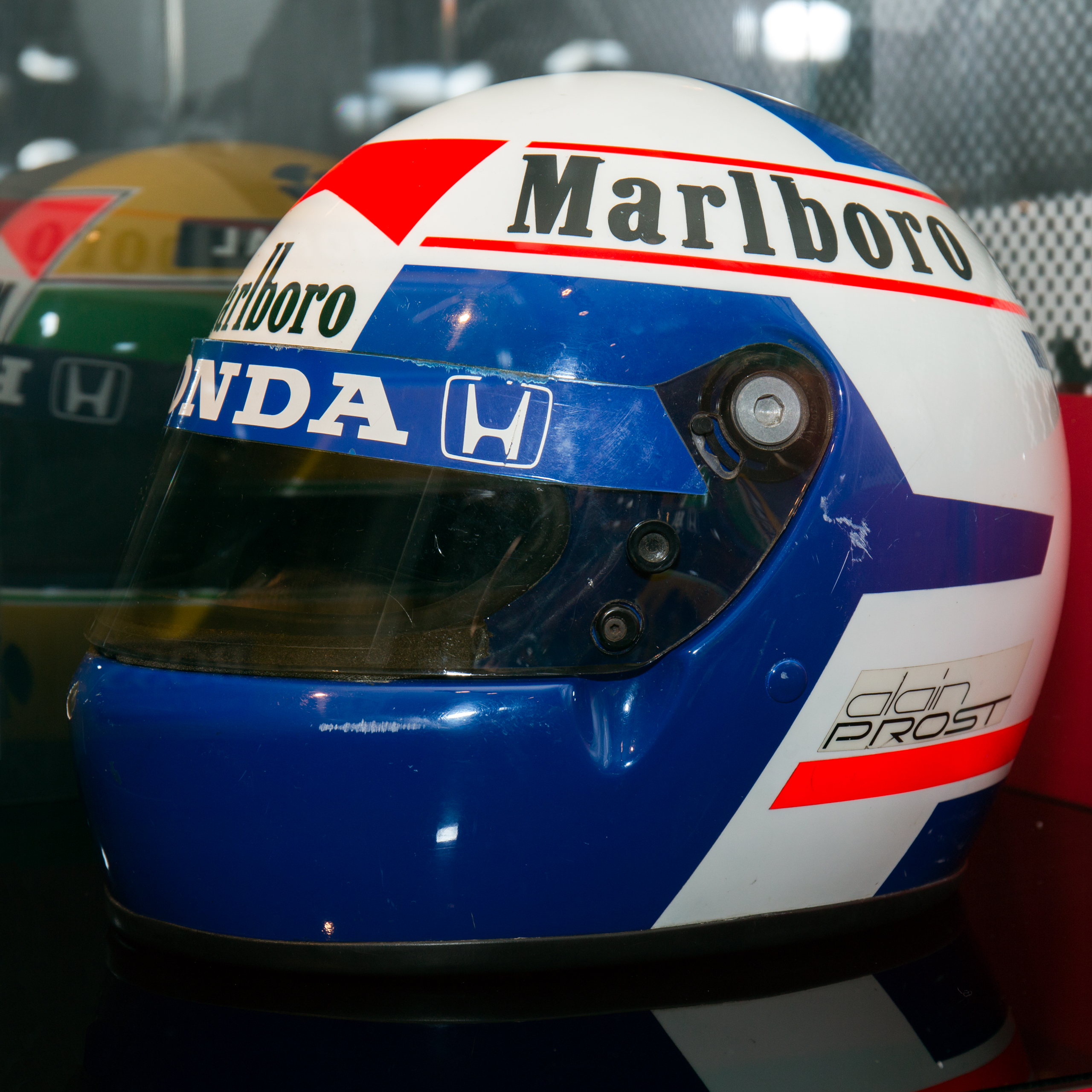
Alain Prost's helmet design consistently featured the three colors of the French flag: blue, white, and red, with his name along the side. In his early career, he used a simpler white design with blue details around the visor. During his time at Renault, he incorporated more blue, particularly at the rear of the helmet. In 1985, his helmet design evolved to include blue around the front and visor, forming a distinctive "P" shape in the white area, and a white ring with red lines around the top. This general design remained similar during his stints at Ferrari and Williams. On occasion, Prost used variations of his helmet design; in 2007, he sported his original design but with an all-red circle top and a red line in the lower chin area. In 2010, he wore a pearl white helmet with silver flames and a blue-white-red-white-blue stripe on the visor, designed by Kaos Design, for events like the Race of Champions.
4. Driving Style and Philosophy
Alain Prost's approach to racing was distinctive, characterized by intellect, precision, and strategic foresight.
4.1. "The Professor" Nickname
During his career, Alain Prost earned the nickname "The Professor" (Le ProfesseurFrench) for his intellectual and methodical approach to competition. Although he did not particularly care for the moniker, he later acknowledged that it accurately described his driving style. This reflected his meticulous preparation and analytical mindset, often seen observing race data and strategizing rather than relying solely on raw speed. Nobuhiko Kawamoto, former Honda F1 boss, once characterized Prost as "the computer" compared to Senna's "samurai" approach.
4.2. Setup Prowess and Tire Management
Prost was exceptionally skilled at setting up his race car for optimal performance. His preferred setup was often described as neutral steer, which minimized steering input and reduced tire wear. Teammates like Keke Rosberg and Stefan Johansson were consistently amazed by his ability to recall and implement precise setup changes, stating that engineers simply needed to follow his instructions. Rosberg noted that Prost's seemingly smooth cornering involved braking at the very limit while turning, a technique he found impossible to replicate. Satoru Nakajima also expressed surprise at Prost's rapid adaptation to different circuits, quickly finding the optimal setup.
A hallmark of Prost's strategy was his exceptional tire and brake management. He would often conserve these components early in a race, leaving them fresher for a strong push towards the end. His mantra was to "win as slowly as possible," a philosophy he may have adopted from mentors like Niki Lauda or Juan Manuel Fangio. This careful preservation allowed him to minimize pit stops, a crucial advantage in the turbo era, as seen in his 1986 Australian Grand Prix victory, where his tires were in unexpectedly good condition, influencing rival teams' strategies. In the 1987 and 1988 Brazilian Grands Prix, he won with one fewer tire change than his rivals in scorching conditions. At the 1989 Brazilian Grand Prix, despite clutch trouble preventing a planned second stop, he managed a second-place finish on heavily worn tires from an early pit stop, describing it as "more satisfying than a win."
4.3. Critical Evaluation and Anecdotes
Prost's smooth and relaxed driving style contrasted sharply with the "flat out all the time" approach of competitors like Senna. He consciously modeled his technique on personal heroes such as Jackie Stewart and Jim Clark. While some critics, like Nigel Mansell, dismissed his style as merely "chauffeur[ing]" the best car, Stewart lauded Prost's "silkiness" behind the wheel as artistry, arguing it was far more difficult than simply aggressively throwing a car around. This calmness allowed him to extract maximum performance from the engine without pushing it to failure, leading Clive James to remark that Prost's cars "held together" as if he could hear the engine, treating it "tactfully" unlike other drivers.
However, his conservative approach drew criticism, including from Ron Dennis, who was reportedly upset by Prost's refusal to push for a win at the 1985 Belgian Grand Prix. Prost retorted that after losing championships at the last moment so many times, he was unwilling to take chances.
Despite Senna's superior qualifying pace during their time as teammates (26 poles to Prost's 4 in 32 races), Prost consistently demonstrated raw speed on race day, securing 12 fastest laps to Senna's 6. Niki Lauda observed that Prost's qualifying speed was so high that Lauda stopped trying to match him and instead focused on race setup. However, Prost was still an underrated qualifier, occasionally setting pole without appearing to push the car hard, as noted by McLaren designer Steve Nichols at the 1985 Belgian Grand Prix and Nigel Roebuck at Monaco. Adrian Newey, Prost's car designer at Williams, sometimes found Prost frustrating in testing because he rarely pushed the car to its absolute limit, making it harder to assess its ultimate speed. Yet, Newey acknowledged that Prost "could turn it on" when necessary.
Prost understood the critical importance of being in top-tier machinery, with McLaren's website noting he "built his long career on making the right move at the right time." However, once embedded within a winning team, his relationships with teams and engine suppliers could be fraught. Formula One's website points out that while he made winning look easy, he "was less successful at the politics in which he was invariably embroiled," leading to acrimonious departures from teams on four occasions.
His relationship with Honda, in particular, was complex. Former Honda F1 project leader Osamu Goto criticized Prost's public complaints about Honda's engine management in 1989, particularly his claims of favoritism towards Senna and engine manipulation. Goto argued that Prost's driving style, which continued to conserve revs like in the turbo era, was incompatible with the new NA engines, where fuel efficiency was less of a concern. He recalled needing to place stickers on Prost's analog tachometer to remind him to use higher revs. However, Prost maintained that differences existed in the engine's ECU, which he believed was subtly altered to affect fuel consumption, and claimed Honda eventually admitted to this. Despite these conflicts, Prost maintained respect for Honda, praising their decision to return to F1 as an engine supplier in 1998 without forming a full-fledged works team.
Prost was often perceived as disliking wet races, a reputation that stemmed from a traumatic accident in 1982 involving his friend Didier Pironi. Prost clarified that he was previously good in the wet, but after witnessing Pironi's life-altering crash (which occurred in low visibility due to spray), his main fear became the obscured vision caused by water spray from leading cars, not the lack of grip itself. He demonstrated his skill in the wet by winning the 1984 Monaco Grand Prix and finishing second in the 1988 German Grand Prix in damp conditions. However, his strong aversion to heavy rain was evident in the 1989 Australian Grand Prix, where he walked the grid trying to convince other drivers to withdraw due to the extreme downpour, and ultimately refused to start the race, despite Bernie Ecclestone's pleas. He also disliked the Detroit Street Circuit.
A medical issue also contributed to his difficulties in low-light, wet conditions: it was later revealed in 2012 that a concussion from a crash at Watkins Glen in 1980 had impaired his right eye's vision, making it hard to see in dim or rainy conditions, a fact he kept private during his career.
5. Career Legacy and Reception
Alain Prost's historical impact and standing within Formula One are objectively evaluated based on his achievements, the appraisals of his contemporaries, and his defining rivalries.
5.1. Achievements and Records
Alain Prost is widely regarded as one of Formula One's greatest-ever drivers. He is tied for the fourth-most Drivers' Championships of all time (4), behind Lewis Hamilton and Michael Schumacher (7 each) and Juan Manuel Fangio (5). Notably, he was just 12.5 points away from an eight-title career, having lost the 1984 title by half a point and the 1983 and 1988 titles by 2 and 3 points, respectively.
At the time of his retirement, Prost held the record for most career Grand Prix victories (51), a record he held for fourteen years until Michael Schumacher broke it during the 2001 season. Prost himself believed that had Ayrton Senna not died in 1994, Senna would have broken Prost's wins record first. While Senna held the record for most career pole positions at Prost's retirement, Prost was exceptionally strong on race day and held the record for most career fastest laps (41) until 2001, when Schumacher also surpassed that mark.
Prost currently shares the record for the highest percentage of races started from the front row in a single season (16 for 16 in 1993) with Ayrton Senna (1989) and Damon Hill (1996). As of November 2024, he remains the last Frenchman to have won his home Grand Prix. He also holds the record for the most starts with a turbo-charged engine (126). Prost is also recognized as one of the greatest athletes of the 20th century, alongside figures such as Pelé, Muhammad Ali, Carl Lewis, and Steffi Graf.
5.2. Appraisals by Contemporaries
In a 2009 Autosport survey involving 217 Formula One drivers, Prost was voted the fourth greatest Formula One driver of all time, behind Senna, Schumacher, and Fangio. His teammate Keke Rosberg described him as "the best I've ever known, no question about it. As an all-round race driver he's head and shoulders clear of anyone else."
Former Formula One CEO Bernie Ecclestone traditionally considered Prost the greatest driver, arguing that unlike Senna or Schumacher, Prost rarely received number one driver treatment. In 2023, however, Ecclestone stated that Max Verstappen had surpassed Prost. Jordan team boss Eddie Jordan echoed Ecclestone's opinion, appreciating that Prost "never minded who his teammate was" (with Senna being a notable exception). Formula One medical chief Sid Watkins regarded Prost and Niki Lauda as the most intelligent drivers he had worked with, noting only one significant accident involving Prost in his career. Yoshi Nakamura, the first Honda F1 director, lauded Prost's ability to win even with less powerful cars, calling him "a true Grand Prix driver."
Various outlets have attempted to quantitatively measure driver skill relative to car quality:
- University of Sheffield (2016): Second all-time
- The Economist (2020): Third all-time
- Carteret Analytics (2020): Eighth all-time
- F1-Analysis.com (2022): Fourth all-time; second all-time after correcting for era differences
5.3. Rivalry with Ayrton Senna
The rivalry between Alain Prost and Ayrton Senna is one of the most intense and well-documented in Formula One history. Their battles began in the 1988 season when Senna joined Prost at McLaren.
The rivalry intensified quickly, with several infamous on-track incidents:
- Estoril 1988**: Senna attempted to block Prost's overtake by forcing him towards the pit wall. Prost managed to pull away and take the lead, but was angered by Senna's dangerous maneuver, marking the beginning of their strained relationship.
- Imola 1989**: Before the restarted race, Prost and Senna had a "gentleman's agreement" not to challenge each other into the first corner. However, after the restart, Senna aggressively passed Prost, breaking the agreement. Prost was furious and boycotted the post-race press conference, leading to a fine. This incident solidified the breakdown of their relationship, pushing Prost to announce his departure to Ferrari.
- Suzuka 1989**: At the Japanese Grand Prix, the penultimate race, Prost and Senna, fighting for the championship, collided at the final chicane. Prost, leading the race, closed the door on Senna, who was attempting an overtake. Prost immediately exited his car, while Senna restarted and won the race but was later disqualified for missing the chicane and receiving a push start. This controversial decision handed the championship to Prost. The incident sparked widespread debate over who was at fault, with Prost maintaining he did not "open the door" for Senna.
- Suzuka 1990**: At the same circuit a year later, the roles were reversed, with Senna leading Prost (now at Ferrari) in the championship. Senna, unhappy with his pole position being on the "dirty" side of the track, intentionally drove into Prost at the first corner immediately after the start, taking both out of the race and securing his own championship. Prost called Senna's actions "disgusting." Senna later admitted in 1991 that the crash was premeditated retaliation for the 1989 incident.
- Hockenheim 1991**: During the German Grand Prix, Prost and Senna were battling for fourth place. Prost felt Senna defended too aggressively, forcing him off track and into the escape road. Prost subsequently stalled his engine but rejoined the race, while Senna ironically ran out of fuel on the final lap at the same spot.
Following the 1991 Hockenheim incident, the FISA mandated a meeting between the two drivers to de-escalate tensions.
The rivalry extended beyond the track. After the 1992 season, with Ferrari's decline and Honda's withdrawal, Williams-Renault emerged as the dominant force. When Prost announced his return with Williams for 1993, he famously negotiated a clause in his contract preventing Senna from joining as his teammate. This led Senna to publicly brand Prost a "coward" during a press conference. Prost's refusal to race with Senna on equal terms angered Senna's Brazilian fans, so much so that Prost required a police escort at the 1993 Brazilian Grand Prix.
Prost comfortably won the 1993 title and retired at season's end, paving the way for Senna to take the lead at Williams in 1994. Once they were no longer direct competitors, their relationship began to mend. At Prost's final Grand Prix, the 1993 Australian Grand Prix, Senna famously pulled him onto the top step of the podium for an embrace, a gesture Prost found surprising. Just days before Senna's fatal accident at the 1994 San Marino Grand Prix, while filming an in-car lap of Imola for French television, Senna greeted Prost (who was now a pundit), saying, "A special hello to my... to our dear friend, Alain. We all miss you Alain." Prost expressed being deeply touched by the comment. Prost served as a pallbearer at Senna's funeral and later commented that when Senna died, "a part of himself had died also," as their careers had been so deeply intertwined. Senna similarly admitted to a close friend that after Prost retired, he realized how much of his motivation had come from battling Prost.
5.4. Comparison with Teammates
Throughout his Formula One career, Alain Prost generally outperformed his teammates statistically, including five who were World Champions themselves. The main exceptions were his debut season in 1980, where he was outscored by veteran John Watson, and the 1984 season, when he narrowly lost the championship to Niki Lauda by half a point.
In 1988, despite Ayrton Senna winning the Drivers' Championship, Prost actually scored more overall points (105 to Senna's 94) but lost the title due to the "dropped scores" system, where only a driver's 11 best results counted towards the championship. Prost was a strong critic of this rule, which was later revised in 1990.
| Year | Prost's Points | Teammate's Points | Teammate |
|---|---|---|---|
| 1980 | 5 | 6 | John Watson |
| 1981 | 43 | 11 | René Arnoux |
| 1982 | 34 | 28 | René Arnoux |
| 1983 | 57 | 22 | Eddie Cheever |
| 1984 | 71.5 | 72 | Niki Lauda |
| 1985 | 73 (76 total) | 14 | Niki Lauda |
| 1986 | 72 (74 total) | 22 | Keke Rosberg |
| 1987 | 46 | 30 | Stefan Johansson |
| 1988 | 87 (105 total) | 90 (94 total) | Ayrton Senna |
| 1989 | 76 (81 total) | 60 | Ayrton Senna |
| 1990 | 71 (73 total) | 37 | Nigel Mansell |
| 1991 | 34 | 21 | Jean Alesi |
| 1993 | 99 | 69 | Damon Hill |
6. Post-Retirement Career
Following his retirement from active Formula One racing, Alain Prost engaged in various roles within and outside motorsport.
6.1. Prost Grand Prix
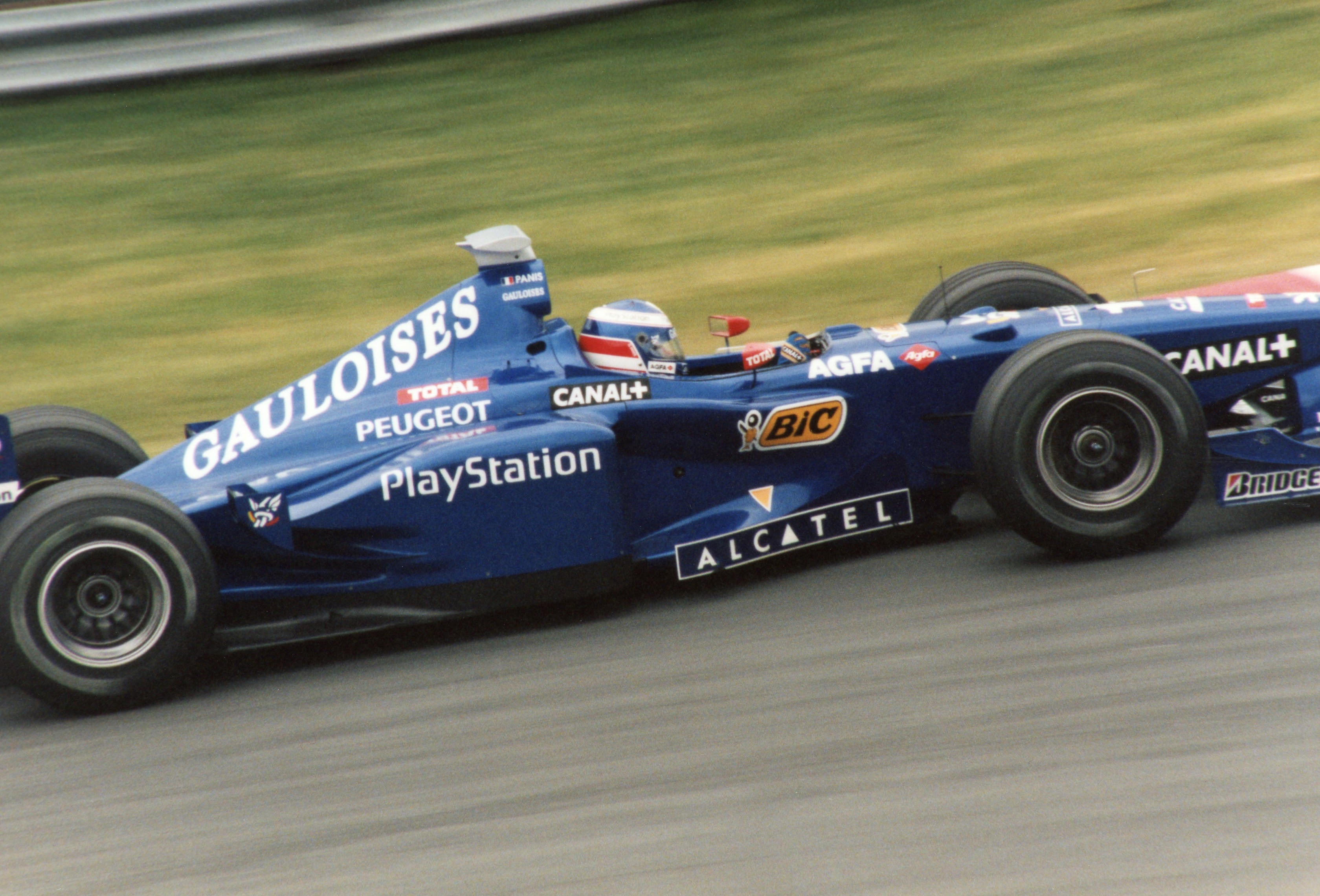
Alain Prost began contemplating forming his own team in 1989, as his relationship with McLaren teammate Ayrton Senna deteriorated. He and former McLaren chief designer John Barnard nearly established a team in 1990, but a lack of sponsorship prevented it, leading Prost to Ferrari. After a falling out with Ferrari at the end of 1991, Prost was without a drive for 1992. Extensive negotiations with Guy Ligier to purchase his Ligier team failed, and Prost ultimately joined Williams for 1993. By 1995, while Prost was working for Renault, there was speculation about a Prost-Renault team being formed, but Renault declined Prost's request for engine supply.
On February 13, 1997, Prost acquired the Ligier team from Flavio Briatore and rebranded it as "Prost Grand Prix". The day after the acquisition, Prost signed a three-year deal with French manufacturer Peugeot to supply engines from 1998 to 2000. For the team's inaugural season, Prost retained Olivier Panis, who had won the 1996 Monaco Grand Prix with Ligier, and signed Japanese driver Shinji Nakano as his partner. The team initially used the Mugen-Honda engines from the previous season, with the car, originally a Ligier JS45, renamed Prost JS45. The team showed early promise, scoring two points in its debut at the 1997 Australian Grand Prix with Panis finishing fifth. They accumulated 13 more points before Panis broke his leg during the 1997 Canadian Grand Prix. He was replaced by Jarno Trulli from Minardi. However, the team's performance declined after Panis's injury, scoring only five points during his recovery. Prost Grand Prix finished sixth in the Constructors' Championship in its first season with 21 points.
Prost became the president of Prost Grand Prix at the start of 1998. With Peugeot supplying engines to Prost GP, Mugen-Honda shifted its supply to the Jordan team. Prost GP had a difficult season, scoring only a single point when Trulli finished sixth at the 1998 Belgian Grand Prix.
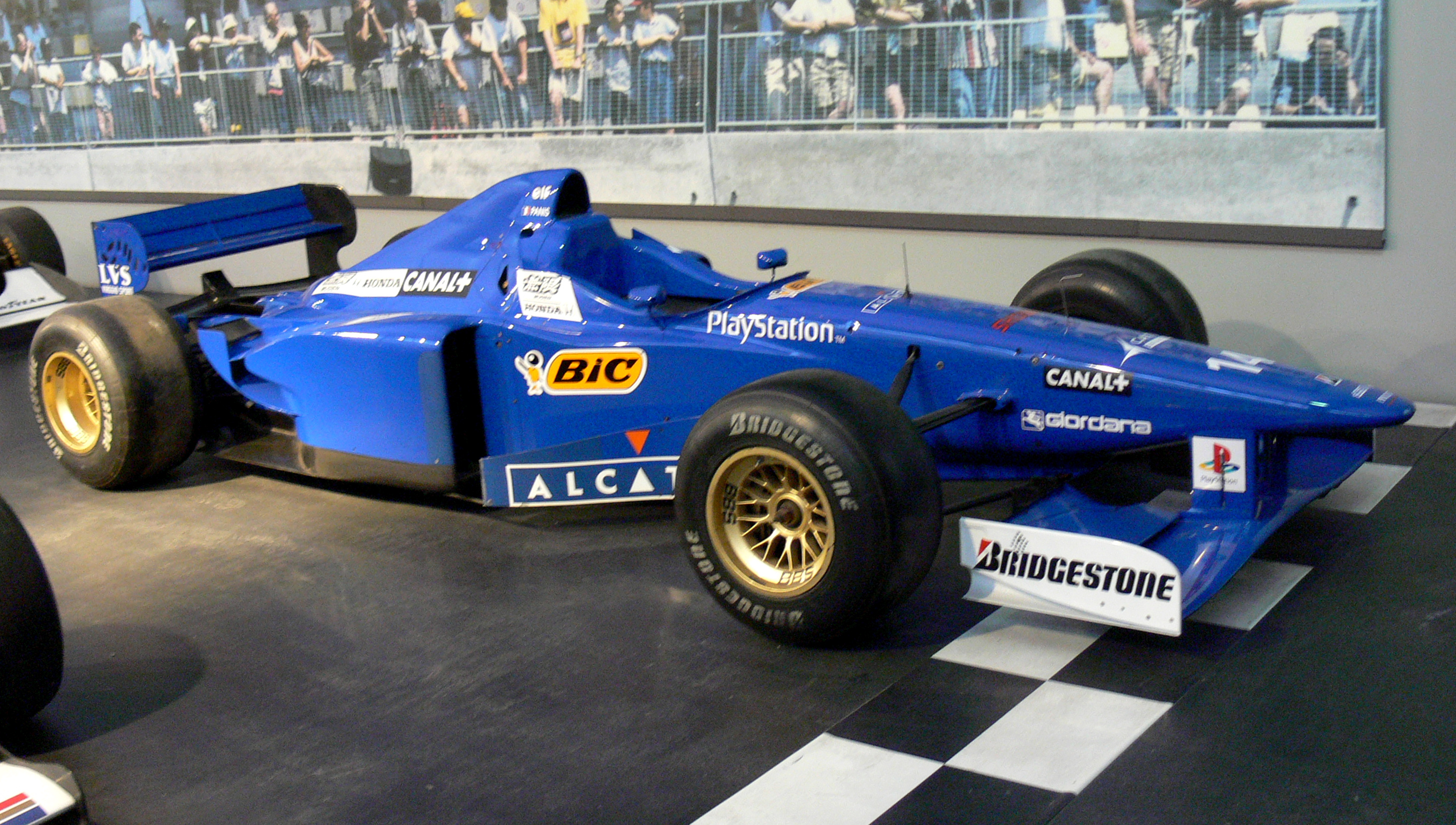
The 1999 season was crucial for Prost GP. Prost hired John Barnard as a technical consultant, with Barnard's B3 Technologies company assisting Loic Bigois in designing the Prost AP02. Panis and Trulli remained with the team. While the car's chassis was not a major concern, the Peugeot V10 engine proved to be heavy and unreliable, hindering performance. This led to frustrations within the team and a lack of competitive results.
Peugeot's final year as Prost's engine supplier in 2000 brought some optimism. Prost recruited his 1991 Ferrari teammate Jean Alesi as the lead driver and German Nick Heidfeld, the 1999 International Formula 3000 champion, as his partner. However, the season proved disastrous: the Prost AP03 was unreliable and difficult to handle. The situation worsened when both drivers collided in the 2000 Austrian Grand Prix. Technical director Alan Jenkins was fired midway through the year. Prost restructured the team, appointing Joan Villadelprat as managing director and Henri Durand as the new technical director.
In 2001, Ferrari agreed to supply engines, offering a glimmer of hope. However, the team's financial difficulties proved insurmountable. Money ran out at the start of the 2002 season, forcing Prost Grand Prix into bankruptcy and leaving behind debts of approximately 30.00 M USD. The team's failure was a significant personal setback for Prost.
6.2. Other Roles and Activities
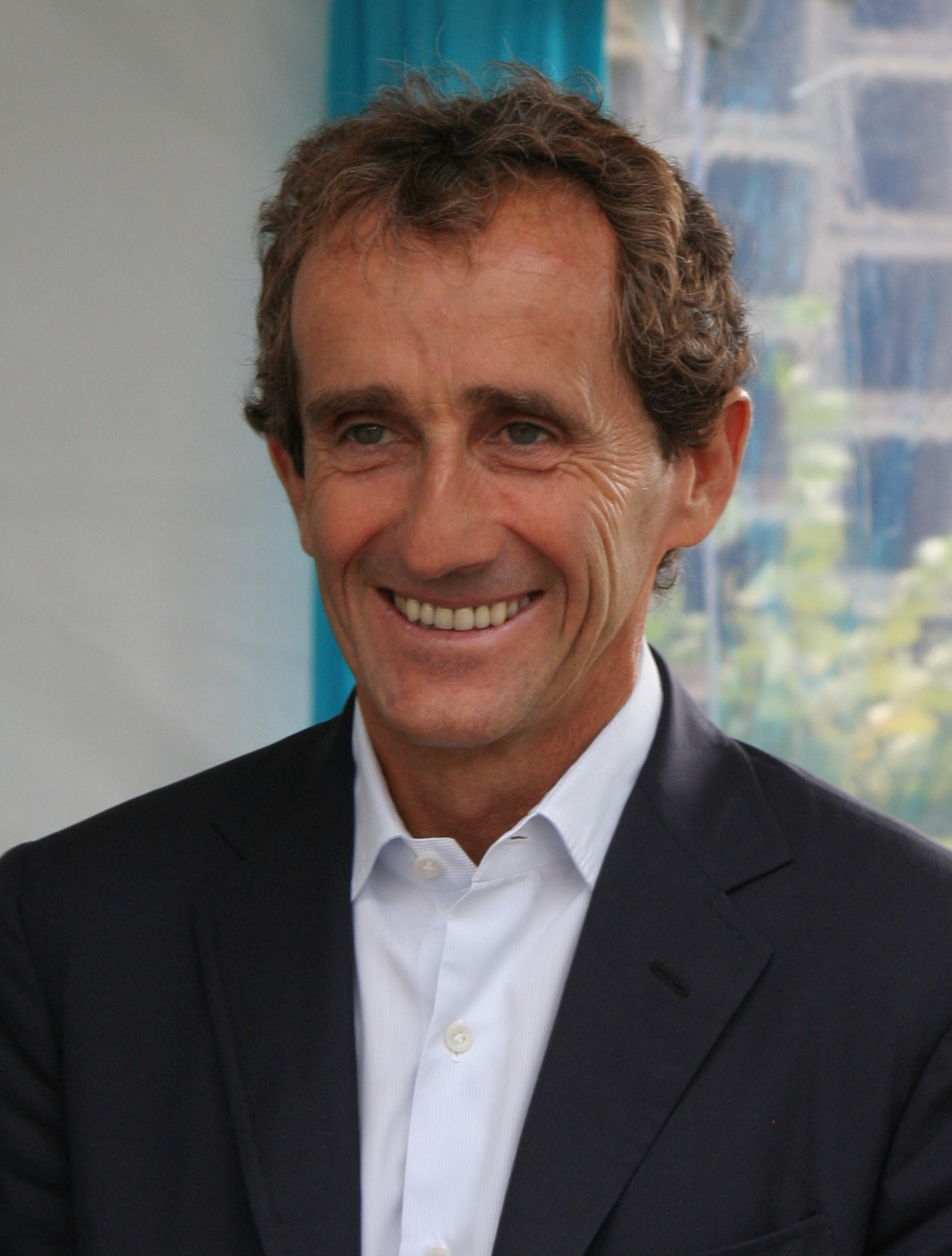
After the dissolution of Prost Grand Prix, Alain Prost spent 2002 with his family and also competed in eight bicycle races, notably finishing third in the Granite - Mont Lozère. He began racing in the Andros Trophy, an ice racing series, in 2003, finishing second behind Yvan Muller. He continued to compete in the Andros Trophy, winning titles with Toyota in 2006/07 and 2007/08, and with Dacia in 2011/2012, accumulating 38 race victories and three drivers' championships in the series.
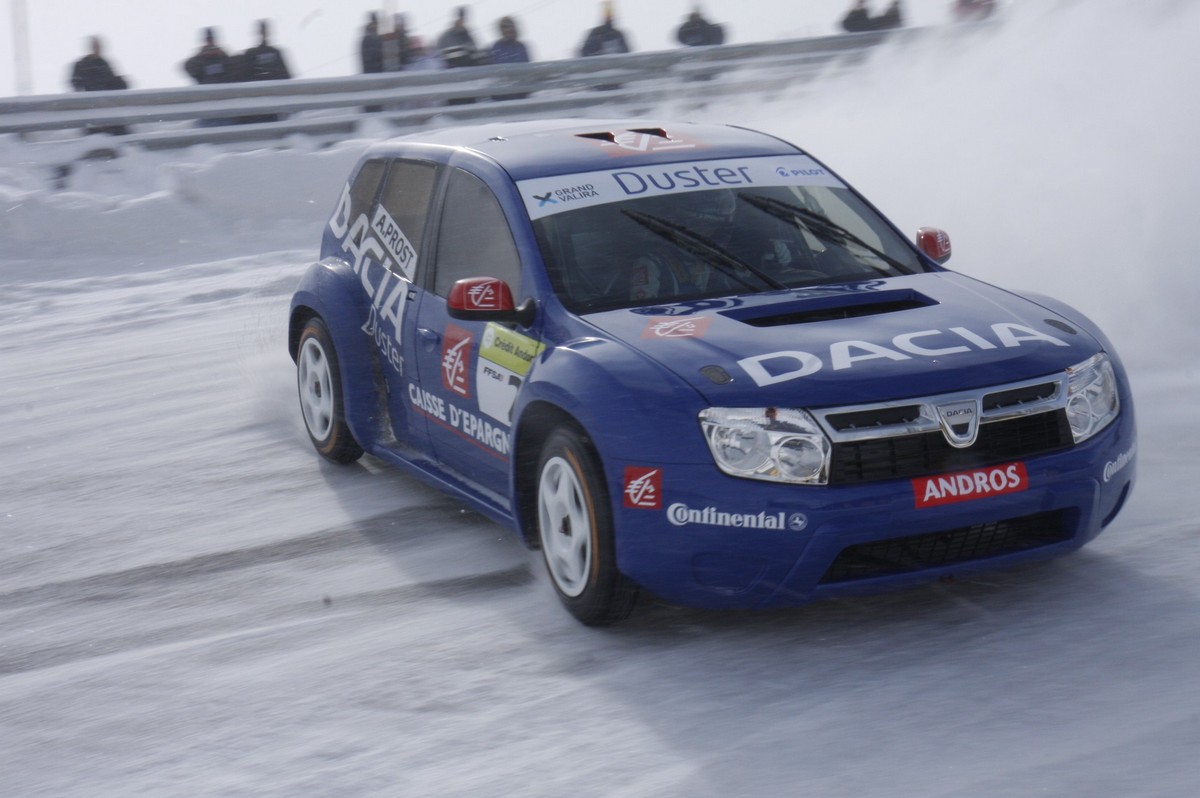
From 1994 to 1995, Prost served as a pundit for the French TV channel TF1. He also worked in a public relations and promotional capacity for Renault. He later returned to his former team, McLaren, as a technical advisor. Prost is an avid cyclist, participating in events like L'Étape du Tour, an annual mass-participation bike ride that takes place on a stage of the Tour de France. He completed the Absa Cape Epic, an eight-day, 435 mile (700 km) mountain bike race in South Africa, twice in 2012 and 2013, though he did not finish in 2014. He has also expressed his love for golf and was co-owner of a 27-hole golf course near Dijon in 1989.
In 2010, the Formula One Sporting Regulations were changed to include a former driver on the stewards' panel, and Prost was the first to assume this role at the 2010 Bahrain Grand Prix. He also participated in the 2010 Race of Champions, an event for motorsport legends. In February 2012, Prost was appointed as Renault's new international ambassador, representing the company at sports demonstrations and events.
In October 2013, it was announced that Prost would partner with Jean-Paul Driot's DAMS racing team to form e.dams (later Renault e.dams), a team for the new FIA Formula E Championship for electric racing cars, starting in September 2014. The team's initial driver lineup included his son, Nicolas Prost, and Sébastien Buemi. Renault e.dams went on to win three consecutive Teams' Championships from the 2014-15 to 2016-17 Formula E seasons. Prost also served as a pundit for Channel 4 F1 during the 2016 season.
In 2017, he was employed as a special adviser for the Renault Formula One Team. In July 2019, he took on a non-executive director role with Renault Sport. During the 1000th Formula One race, the 2019 Chinese Grand Prix, Prost had the honor of waving the checkered flag as Lewis Hamilton crossed the line to take his 75th career victory. Prost continued his role within the Renault Formula One Team, which was rebranded as Alpine F1 Team in 2021, until his departure in January 2022, which he criticized for a "lack of respect" in its announcement.
7. Personal Life
Alain Prost was married to Anne-Marie Barges (born February 14, 1955) in 1980, but they divorced in 2017. They have two sons: Nicolas (born August 18, 1981) and Sacha Prost (born May 30, 1990). Prost also has a daughter, Victoria, born in 1996, from his relationship with Bernadette Cottin. Through Nicolas, Prost has two grandsons, Kimi (born November 2015) and Mika (born December 2020). Through Sacha, he has another grandson, Liam (born June 2018).
Prost initially resided in his hometown of Saint-Chamond. However, in April 1983, following a contentious period with the Renault F1 team and incidents where Renault factory workers reportedly burned his Mercedes-Benz and another car, Prost moved his family to Sainte-Croix, Switzerland, and shortly thereafter to Yens. They lived there until November 1999, when they moved to Nyon, also in Switzerland. This move was partly influenced by the high tax rates in France, with Prost noting that 85% of his income was taken in taxes, despite most of his work being outside France. Besides his native French language, Prost is fluent in English and Italian.
8. Awards and Honors
Alain Prost has received numerous significant awards and honors throughout his career:
- 1985:** He was awarded the Légion d'honneur (Chevalier, 5th class) by French President François Mitterrand.
- 1993:** He was promoted to Officier rank in the Légion d'honneur.
- 1994:** He was awarded an honorary OBE by the British government.
- 1999:** He was inducted into the International Motorsports Hall of Fame.
- 1999:** He received the Brazilian Order of the Southern Cross.
- 1999:** He was honored with the "World Sports Awards of the 20th Century" in motor sport.
- 2017:** He was inducted into the FIA Hall of Fame.
9. In Popular Culture
Alain Prost has been featured in popular media, including:
- ''Tooned''**: He voiced an animated depiction of himself in McLaren's ''Tooned'' cartoon series, created to commemorate McLaren's 50th anniversary. Episode 5 of the second season presented a fictionalized account of the 1984 Formula One season, attributing Prost's mechanical failures and championship standing to the actions of the character Professor M.
- Documentaries**: He appeared in the 2010 documentary ''Senna'', discussing his rivalry with Ayrton Senna.
10. Career Statistics
10.1. Karting Records
| Season | Series | Team | Position |
|---|---|---|---|
| 1973 | French Championship - Junior | 1st | |
| French Championship - Senior | 2nd | ||
| European Championship - Junior | 1st | ||
| FIA Karting World Championship - Junior | 1st | ||
| FIA Karting World Championship - Senior | 14th | ||
| 1974 | French Championship - Senior | 1st | |
| FIA Karting World Championship - Senior | 23rd | ||
| 1975 | French Championship - Senior | 1st (DSQ) | |
| FIA Karting World Championship - Senior | 9th |
10.2. Formula One Results
| Year | Entrant | Chassis | Engine | 1 | 2 | 3 | 4 | 5 | 6 | 7 | 8 | 9 | 10 | 11 | 12 | 13 | 14 | 15 | 16 | Final World Drivers' Championship position | Points |
|---|---|---|---|---|---|---|---|---|---|---|---|---|---|---|---|---|---|---|---|---|---|
| 1980 | Marlboro Team McLaren | McLaren M29B | Ford Cosworth DFV 3 L V8 | ARG 6 | BRA 5 | RSA DNS | USW | 16th | 5 | ||||||||||||
| McLaren M29C | BEL Ret | MON Ret | FRA Ret | GBR 6 | GER 11 | AUT 7 | |||||||||||||||
| McLaren M30 | NED 6 | ITA 7 | CAN Ret | USA DNS | |||||||||||||||||
| 1981 | Equipe Renault Elf | Renault RE20B | Renault EF1 1.5 L V6 t | USW Ret | BRA Ret | ARG 3 | SMR Ret | BEL Ret | 5th | 43 | |||||||||||
| Renault RE30 | MON Ret | ESP Ret | FRA 1 | GBR Ret | GER 2 | AUT Ret | NED 1 | ITA 1 | CAN Ret | CPL 2 | |||||||||||
| 1982 | Equipe Renault Elf | Renault RE30B | Renault EF1 1.5 L V6 t | RSA 1 | BRA 1 | USW Ret | SMR Ret | BEL Ret | MON 7† | DET NC | CAN Ret | NED Ret | GBR 6 | FRA 2 | GER Ret | AUT 8† | SUI 2 | ITA Ret | CPL 4 | 4th | 34 |
| 1983 | Equipe Renault Elf | Renault RE30C | Renault EF1 1.5 L V6 t | BRA 7 | 2nd | 57 | |||||||||||||||
| Renault RE40 | USW 11 | FRA 1 | SMR 2 | MON 3 | BEL 1 | DET 8 | CAN 5 | GBR 1 | GER 4 | AUT 1 | NED Ret | ITA Ret | EUR 2 | RSA Ret | |||||||
| 1984 | Marlboro McLaren International | McLaren MP4/2 | TAG TTE PO1 1.5 L V6 t | BRA 1 | RSA 2 | BEL Ret | SMR 1 | FRA 7 | MON 1‡ | CAN 3 | DET 4 | DAL Ret | GBR Ret | GER 1 | AUT Ret | NED 1 | ITA Ret | EUR 1 | POR 1 | 2nd | 71.5 |
| 1985 | Marlboro McLaren International | McLaren MP4/2B | TAG TTE PO1 1.5 L V6 t | BRA 1 | POR Ret | SMR DSQ | MON 1 | CAN 3 | DET Ret | FRA 3 | GBR 1 | GER 2 | AUT 1 | NED 2 | ITA 1 | BEL 3 | EUR 4 | RSA 3 | AUS Ret | 1st | 73 (76) |
| 1986 | Marlboro McLaren International | McLaren MP4/2C | TAG TTE PO1 1.5 L V6 t | BRA Ret | ESP 3 | SMR 1 | MON 1 | BEL 6 | CAN 2 | DET 3 | FRA 2 | GBR 3 | GER 6† | HUN Ret | AUT 1 | ITA DSQ | POR 2 | MEX 2 | AUS 1 | 1st | 72 (74) |
| 1987 | Marlboro McLaren International | McLaren MP4/3 | TAG TTE PO1 1.5 L V6 t | BRA 1 | SMR Ret | BEL 1 | MON 9† | DET 3 | FRA 3 | GBR Ret | GER 7† | HUN 3 | AUT 6 | ITA 15 | POR 1 | ESP 2 | MEX Ret | JPN 7 | AUS Ret | 4th | 46 |
| 1988 | Honda Marlboro McLaren | McLaren MP4/4 | Honda RA168E 1.5 L V6 t | BRA 1 | SMR 2 | MON 1 | MEX 1 | CAN 2 | DET 2 | FRA 1 | GBR Ret | GER 2 | HUN 2 | BEL 2 | ITA Ret | POR 1 | ESP 1 | JPN 2 | AUS 1 | 2nd | 87 (105) |
| 1989 | Honda Marlboro McLaren | McLaren MP4/5 | Honda RA109E 3.5 L V10 | BRA 2 | SMR 2 | MON 2 | MEX 5 | USA 1 | CAN Ret | FRA 1 | GBR 1 | GER 2 | HUN 4 | BEL 2 | ITA 1 | POR 2 | ESP 3 | JPN Ret | AUS Ret | 1st | 76 (81) |
| 1990 | Scuderia Ferrari | Ferrari 641 | Ferrari 036 3.5 L V12 and 037 3.5 L V12 | USA Ret | BRA 1 | SMR 4 | MON Ret | 2nd | 71 (73) | ||||||||||||
| Ferrari 641/2 | CAN 5 | MEX 1 | FRA 1 | GBR 1 | GER 4 | HUN Ret | BEL 2 | ITA 2 | POR 3 | ESP 1 | JPN Ret | AUS 3 | |||||||||
| 1991 | Scuderia Ferrari | Ferrari 642 | Ferrari 037 3.5 L V12 | USA 2 | BRA 4 | SMR DNS | MON 5 | CAN Ret | MEX Ret | 5th | 34 | ||||||||||
| Ferrari 643 | FRA 2 | GBR 3 | GER Ret | HUN Ret | BEL Ret | ITA 3 | POR Ret | ESP 2 | JPN 4 | AUS | |||||||||||
| 1993 | Canon Williams Renault | Williams FW15C | Renault RS5 3.5 L V10 | RSA 1 | BRA Ret | EUR 3 | SMR 1 | ESP 1 | MON 4 | CAN 1 | FRA 1 | GBR 1 | GER'' 1 | HUN 12 | BEL 3 | ITA 12† | POR 2 | JPN 2 | AUS 2 | 1st | 99 |
† Did not finish, but was classified as he had completed more than 90% of the race distance.
‡ Race was stopped with less than 75% of laps completed, half points awarded.